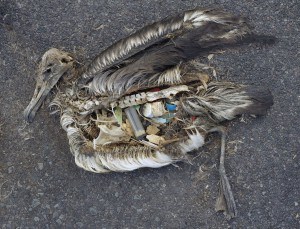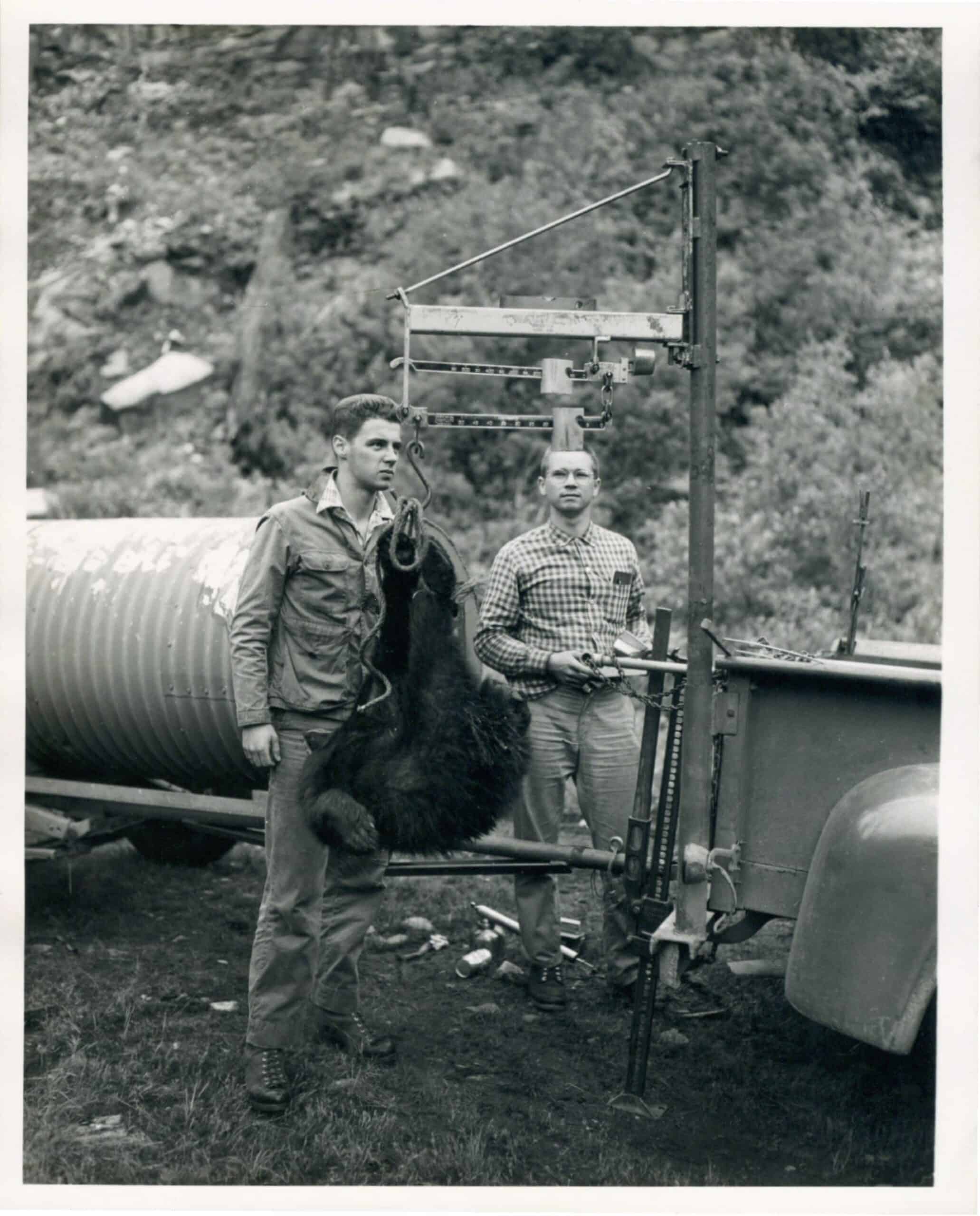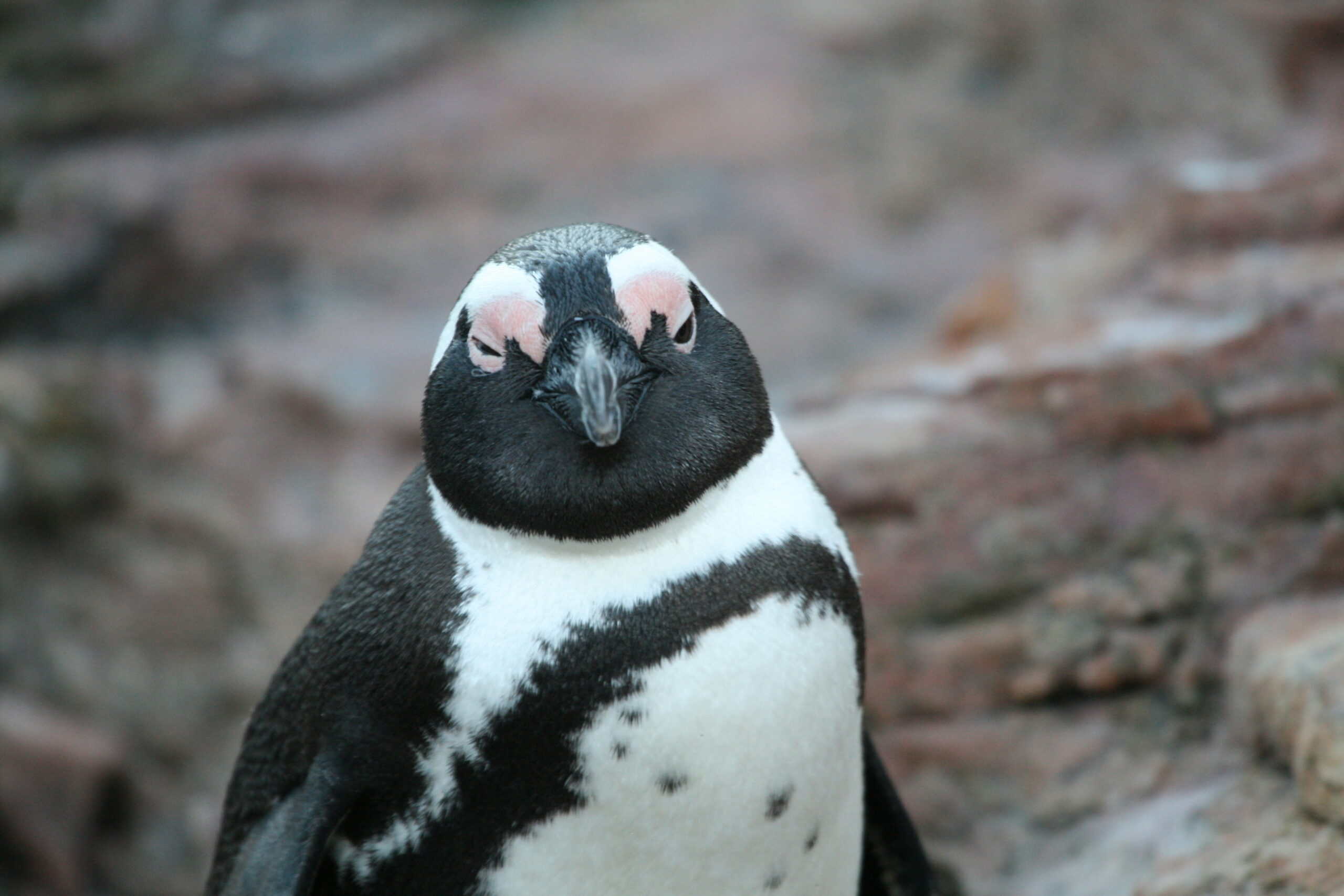Share this article
The smell of marine plastic may attract seabirds
A recent study from the University of California, Davis might help explain why some seabirds eat so much plastic debris. While it’s widely thought that birds visually mistake plastic for food, the study found that smell may also trick the birds into ingesting plastic floating on the ocean’s surface.
Birds of the order Procellariiformes — the albatrosses, shearwaters and petrels — are highly olfactory seabirds that spend most of their time foraging over the open ocean, using their sense of smell to find squid, fish and zooplankton, like krill.
Previous studies have shown that some Procellariiformes species are responsive to the chemical smell of dimethyl sufide (DMS), using it as a foraging cue to locate krill. When krill and other zooplankton feed on algae, the algae releases DMS; thus, for some seabirds, the presence of DMS indicates the presence of food.

An albatross with a stomach full of plastic. ©USFWS/Chris Jordan
Floating plastic debris often becomes coated in DMS-producing algae, and researchers at the University of California, Davis wanted to test if ocean plastics acquire the chemical signature of DMS while in the marine environment.
Graduate student Matthew Savoca and his team tied bags of the three most common types of plastic found in marine debris — high-density polyethylene, low-density polyethylene and polypropylene — to buoys off the coast of California.
After three weeks, chemical testing found DMS in each sample at concentrations that seabirds can detect, confirming that plastic acquires a DMS signature after less than a month in the marine environment. This result suggests that ocean plastic presents, in addition to a possible visual cue, a scent cue that further encourages olfactory seabirds to consume plastic.
The researchers also wanted to understand if DMS responsiveness could be used to predict plastic consumption for Procellariiformes species. Analyzing previous data on plastic ingestion for 13,350 individuals across 25 seabird species, researchers found that DMS responsiveness had a significant positive effect on the frequency of plastic ingestion. The results also showed that DMS-responsive seabirds ingest plastic debris five times more frequently than birds that don’t respond to DMS.
The albatross has become an ambassador for seabird plastic consumption, largely due to Chris Jordan’s photographs of albatross carcasses full of plastic on Midway Atoll in the Pacific. But the study results show that shearwaters and petrels are among the species most susceptible to plastic ingestion. These birds are also mostly understudied because they nest in difficult-to-access underground burrows and are less charismatic than albatross.
Researchers hope their results will inform future monitoring efforts and elucidate the need to direct limited resources toward species most at risk for plastic ingestion, rather than common or charismatic species.
The study was published in the journal Science Advances.
Header Image: A great shearwater (Puffinus gravis) in flight. ©JJ Harrison








